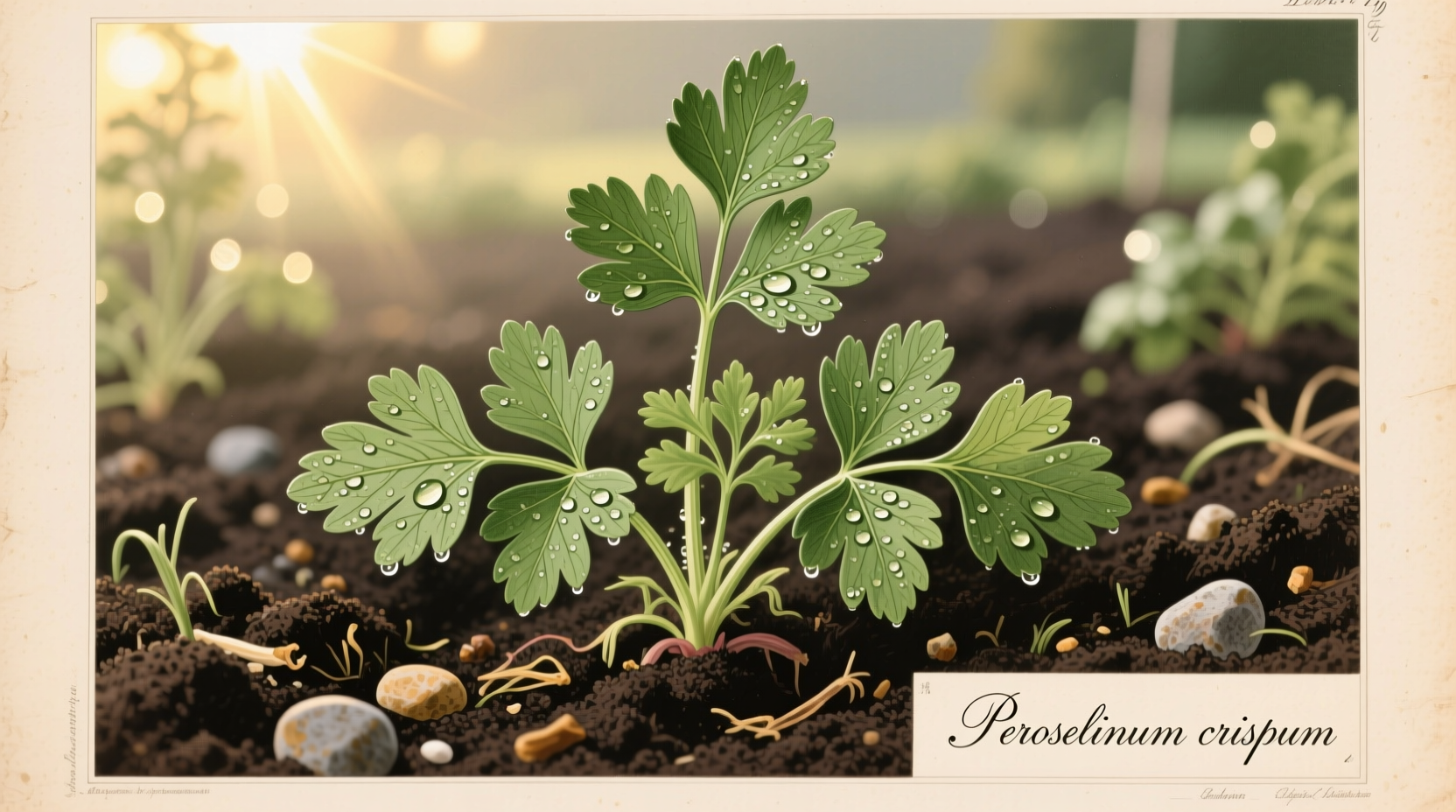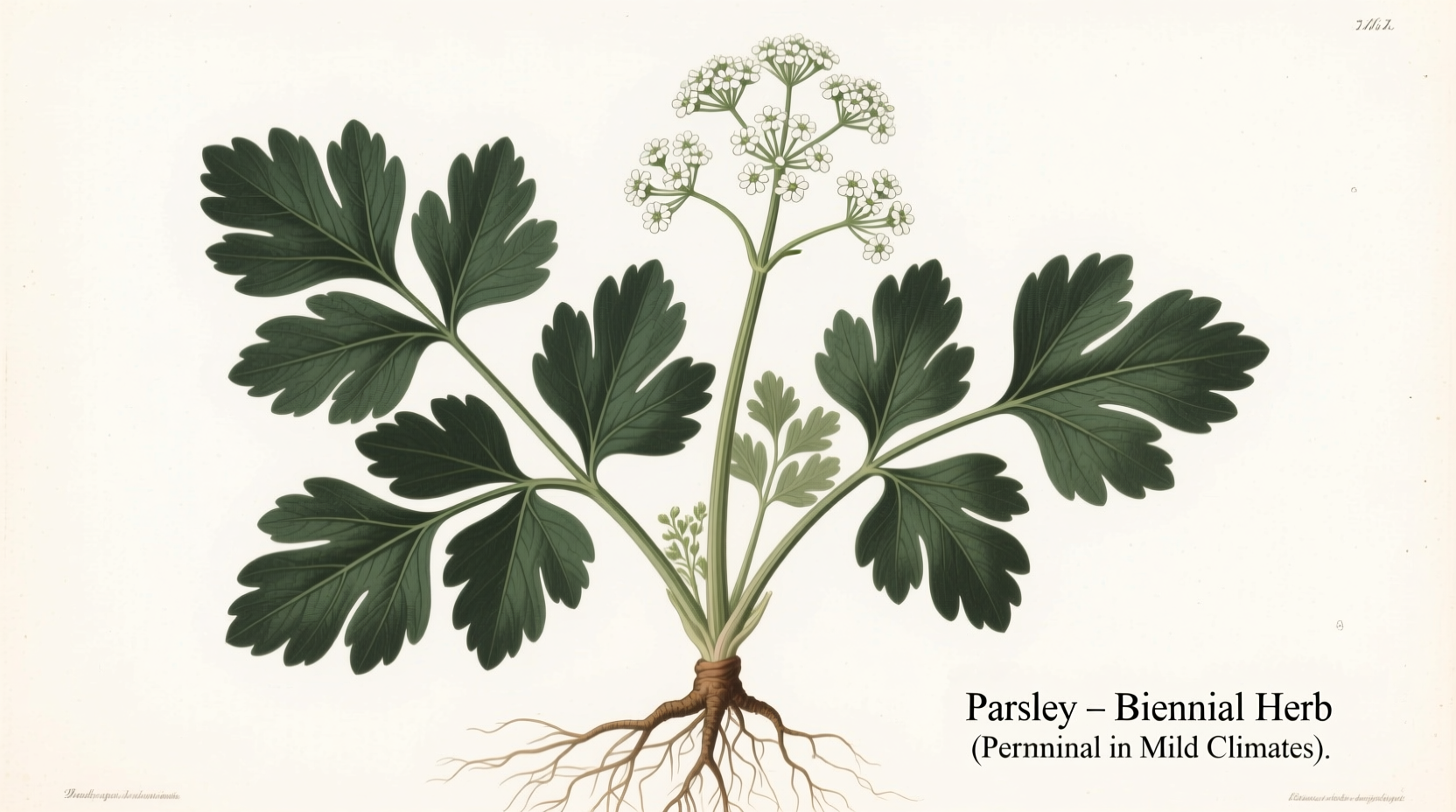Understanding Parsley's True Nature
When you search is parsley perennial, you're likely planning your garden and wondering whether you'll need to replant this essential herb each spring. The straightforward answer matters for your gardening strategy, but the complete picture reveals why parsley behaves differently depending on where you live.
Botanically classified as Petroselinum crispum, parsley belongs to the Apiaceae family (which includes carrots and celery). Unlike true perennials that return reliably year after year, parsley follows a biennial growth pattern. In its first year, it focuses on leaf production—the part we harvest. During its second year, it shifts energy to flowering and seed production before dying.
Climate Determines Parsley's Behavior
The critical factor determining whether parsley acts as a perennial in your garden is your local climate. This explains why gardeners in different regions have conflicting experiences with the same plant.
| USDA Hardiness Zone | Winter Temperature Range | Parsley's Behavior | Expected Longevity |
|---|---|---|---|
| Zones 8-11 | 10°F to 40°F+ | True perennial behavior | 3-5 years with proper care |
| Zones 6-7 | 0°F to 10°F | Reliable biennial | 2 years regularly |
| Zones 4-5 | -20°F to 0°F | Annual unless protected | 1 year typically |
| Zones 1-3 | -40°F to -20°F | Strictly annual | 1 growing season |
This USDA plant hardiness zone comparison shows why the answer to is parsley perennial depends on your location. The Agricultural Research Service's Plant Hardiness Zone Map provides precise zone information for any address in the United States.
Parsley's Two-Year Life Cycle Timeline
Understanding parsley's natural progression helps explain its classification:
- Spring (Year 1): Seeds germinate slowly (2-5 weeks). Plants establish root system and produce first leaves.
- Summer (Year 1): Vigorous leaf production. This is when most harvesting occurs.
- Fall (Year 1): Growth slows as temperatures drop. In mild climates, continues producing leaves.
- Winter (Year 1-2): In zones 6+, survives with protection. In colder zones, dies back.
- Spring (Year 2): Sends up flower stalk. Leaf production decreases and flavor becomes bitter.
- Summer (Year 2): Produces seeds then dies completely.

Practical Strategies for Year-Round Parsley
Whether you're in a cold northern climate or mild southern region, these evidence-based techniques maximize your parsley harvest:
For Cold Climate Gardeners (Zones 3-5)
While technically not perennial here, you can extend parsley's life with these methods:
- Mulch heavily (6-8 inches) after first frost with straw or shredded leaves
- Use cold frames or hoop houses to protect plants from extreme cold
- Container growing allows moving plants to protected areas during winter
- Cut back flowering stalks in second year to prolong leaf production
According to Cornell University's Gardening Resources, these techniques can help parsley survive winters in zone 5 about 60% of the time, effectively making it behave as a short-lived perennial.
For Mild Climate Gardeners (Zones 6-9)
In these zones where is parsley perennial has a yes answer, focus on maintaining productivity:
- Divide plants every 2-3 years to prevent overcrowding and maintain vigor
- Prune regularly to encourage new growth and prevent flowering
- Provide partial shade in hottest months to prevent bolting
- Apply balanced fertilizer in spring and fall for sustained production
Common Misconceptions About Parsley
Many gardeners misunderstand parsley's nature due to these factors:
- Confusing biennial with annual - Most commercial growers treat it as annual for consistent leaf quality
- Early bolting - Stress from heat or drought can trigger premature flowering, making it seem short-lived
- Winter kill in marginal zones - Variable winter temperatures cause inconsistent survival
- Soil depletion - Growing in the same spot for multiple years reduces productivity
Varieties That Perform Best as Perennials
Not all parsley varieties handle multiple seasons equally well. These cultivars show superior perennial characteristics:
- Hamburg Rooted Parsley - Particularly cold-hardy with edible roots
- Italian Flat Leaf (Neapolitanum group) - More resilient than curly varieties
- Extra Triple Curled - Better cold tolerance among curly types
- Japanese Parsley - Naturally adapted to cooler climates
Research from the University of California's Agricultural and Natural Resources program shows flat-leaf varieties typically survive one additional winter compared to curly types in zone 6 conditions.
Seasonal Care Calendar for Perennial Parsley
Follow this month-by-month guide to maximize your parsley harvest year after year:
- January-February: In mild climates, harvest sparingly. In cold climates, check mulched plants for green growth.
- March-April: Remove winter mulch gradually. Apply balanced fertilizer as growth resumes.
- May-June: Harvest regularly to prevent flowering. Watch for aphids and treat organically.
- July-August: Provide afternoon shade in hot climates. Water deeply during dry periods.
- September-October: Divide overcrowded plants. Take cuttings for winter propagation.
- November-December: Apply winter mulch before first hard frost. Harvest final leaves before dormancy.
Troubleshooting Common Parsley Problems
When your perennial parsley strategy isn't working, these solutions help:
- Yellowing leaves - Often indicates overwatering or poor drainage. Amend soil with compost.
- Bitter flavor - Usually means the plant is preparing to flower. Cut back severely to encourage new growth.
- Winter dieback - Increase mulch depth or use frost cloth for additional protection.
- Reduced productivity - Divide plants or relocate to fresh soil to rejuvenate.
When to Replace Your Parsley Plants
Even in ideal conditions, parsley eventually declines. Replace plants when you notice:
- Significantly reduced leaf production despite proper care
- Woodiness in the crown area
- Consistent bolting even with regular harvesting
- Increased disease susceptibility
Most gardeners find replacing parsley every 3-4 years maintains optimal productivity, even in zones where it can technically survive longer.











 浙公网安备
33010002000092号
浙公网安备
33010002000092号 浙B2-20120091-4
浙B2-20120091-4